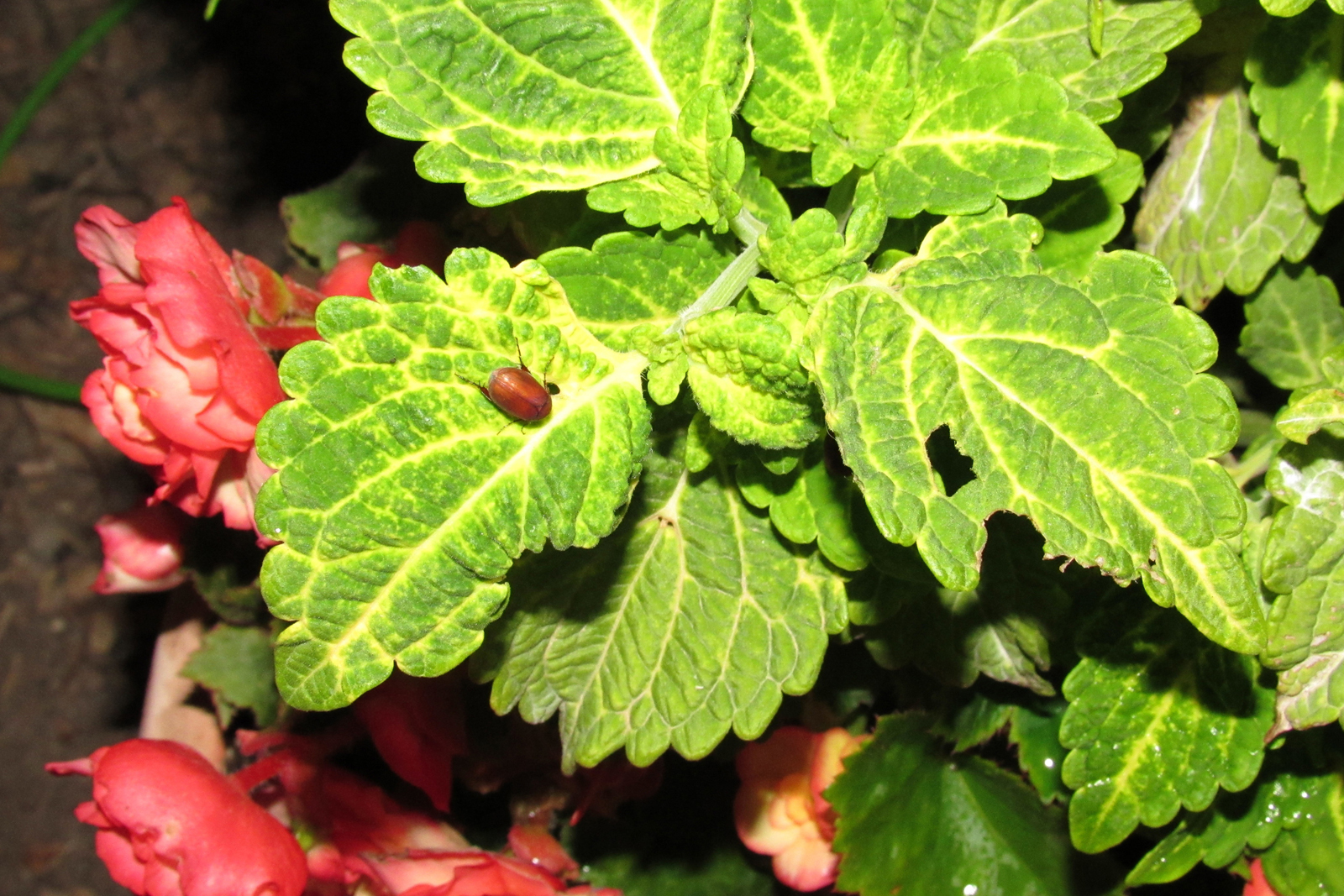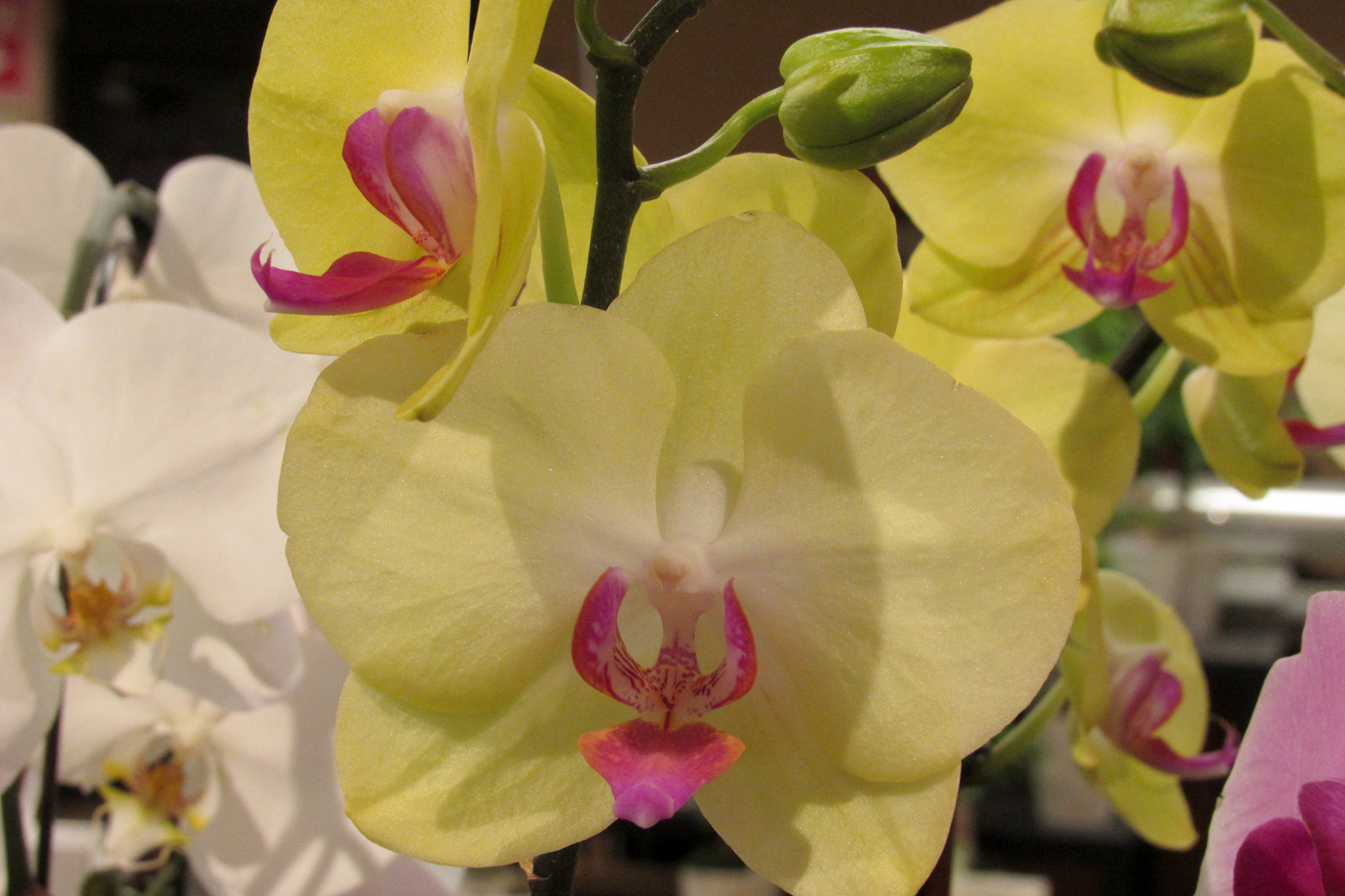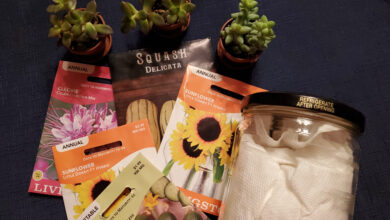Watch out for Asiatic Garden Beetles

There are a lot of scary things happening in your garden at night. I’ve been discovering this recently as the bone-dry conditions have forced me to water late in the day – at dusk and after dark. I know it’s better to water in the morning, but I try to be careful and water at the soil to avoid splashing what’s left of my drought-stressed foliage.
I’ve had lots of company out there after dark – bats, skunks, raccoons, lightning bugs and the Asiatic garden beetle.
If you find irregular holes in the blossoms or foliage of your garden plants – particularly around the leaf margins, it may not be slugs – the Asiatic garden beetle may be to blame.
The first night I discovered the Asiatic beetles, there were several on my sunflowers and coleus. They are attracted to light and I have coleus in planters underneath the exterior lights on our garage.
I was quite stunned to see several beetles on each plant – they are small, velvety, cinnamon brown, 3/8 inch long and the shape of a coffee bean.
In following nights, I did not see so many at one time, but I have been noticing the damage more and more.
According to the University of New Hampshire Cooperative Extension, Asiatic garden beetles are night feeders who hide in the soil around plants during the day. Females lay their eggs in the soil in clusters of up to 50 or more. The larva are similar to Japanese beetles – a C-shaped white grub with a brown head and six legs.
The Asiatic garden beetle overwinters in the soil as a small grub and feeds off the roots of grass and weeds in the early spring. The larvae pupate in May and June and adults emerge in late June and July. There is only one generation each year, but adults may actively feed all summer.
Fortunately, the Asiatic garden beetles are not as destructive as Japanese beetles. They were easy for me to hand-pick, and as I noted, I have not seen as many in recent nights as I saw on the night I discovered them.
If you discover you have Asiatic garden beetles (just shine a flashlight on plants after dark, the beetles will be attracted to it) and want to control them, fabric row covers can be helpful, unless larvae have overwintered in weedy garden soil.
University of New Hampshire Cooperative Extension advises that for chemical control, carbaryl, malathion, rotenone or pyrethrins can be used, but if there is a large population, even several applications may not result in total control.
The Gardens Alive! website also suggests using milky spore powder, as with Japanese beetles, to kill the grubs.
If you use pesticides, be sure to read and follow label directions.





